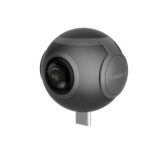Picture this: you’re standing in the greeting card aisle, squinting at rows of generic messages that don’t quite capture what you want to say. Sound familiar? Well, that scenario is becoming ancient history. The landscape of expressing appreciation has shifted beneath our feet, moving from paper to pixels at a pace that’s honestly startling.
Online thank you cards aren’t just a passing trend, they represent a fundamental change in how we acknowledge kindness, celebrate relationships, and maintain connections without wrestling with stamps or praying your card survives the postal system.
The Evolution Nobody Expected
Gratitude hasn’t changed. How do we deliver it? That’s another story entirely.
When Digital Took Over
For decades, handwritten notes on quality stationery were the gold standard. They mattered. But here’s the thing, they also ate up your time and sometimes just weren’t practical. Email started nudging aside traditional mail, then something fascinating occurred. Right now, online sales account for roughly 23% of the U.S. greeting card market share, and that percentage keeps climbing as people chase convenience and endless variety. Nearly one-quarter of the entire market has gone digital. That’s not a fluke.
The best ecards platforms have stepped up impressively. You’ll find everything from minimalist elegance to full-blown multimedia experiences complete with sound and motion. These offerings are polished, customizable, and frequently more heartfelt than anything you’d grab off a drugstore shelf. The transformation crept up slowly, then suddenly accelerated when remote work and pandemic distancing made digital communication not merely convenient but absolutely essential.
What’s Driving the Mass Migration?
Digital thank you cards bring capabilities that physical paper simply cannot compete with. You’re working on your schedule, not store hours. No stamp hunting. No anxious waiting for delivery. And you can incorporate elements that were impossible before, short videos, musical selections, animation, even group contributions from multiple participants across different locations.
Environmental concerns factor heavily too. More of us care deeply about paper consumption and waste reduction. Electronic thank you cards eliminate that guilt completely. Zero trees harvested, no shipping trucks burning fuel, nothing destined for landfills. It’s a modest individual choice that scales dramatically when millions adopt it.
Hidden Advantages You Haven’t Considered
The obvious perks are clear, but digital gratitude cards offer surprising benefits for both casual users and business professionals.
Immediate Impact Without Losing Authenticity
When you send thank you cards online, timing becomes your ally instead of your enemy. Someone extends kindness in your direction, and minutes later they’re reading your appreciation. That speed actually intensifies the emotional resonance. Traditional cards might arrive days or weeks afterward, when the moment has faded. Digital delivery preserves that warm connection while it’s still vivid.
Speed doesn’t require sacrificing depth, though. Modern platforms give you unlimited time to perfect your message, select aesthetics, and incorporate meaningful details. You’re simply eliminating the postal service bottleneck.
Affordable Without Compromising Quality
Paper cards carry real costs, especially after adding postage. Virtual thank you cards generally run cheaper, some platforms offer free options, while providing customization that exceeds most retail offerings. Premium features might require payment, but they typically undercut high-end paper alternatives plus mailing expenses.
Business users particularly value this economics. When you’re regularly thanking clients, team members, or collaborators, expenses accumulate quickly. Digital approaches make gratitude financially sustainable, enabling more frequent appreciation without budgetary constraints limiting your generosity.
True Customization Finally Possible
This is where digital absolutely dominates. You’re not restricted to whatever inventory happens to be stocked. Upload personal photographs. Record video segments. Include their favorite music. Create inside jokes with custom artwork. Some services allow collaborative cards where multiple people add messages, building a collective appreciation experience that paper fundamentally can’t replicate.
Research shows over 90% of American teens and adults report that expressing gratitude made them “extremely happy” or “somewhat happy”. When you enhance that gratitude through digital personalization, you’re amplifying happiness for everyone involved, both the person expressing thanks and the person receiving it.
Getting Started Isn’t Complicated
Jumping into digital thank you cards doesn’t demand technical wizardry. The platforms have evolved into remarkably intuitive tools that work for everyone from digital natives to people who still prefer paper for most communication.
Finding Your Approach
Context matters enormously. A quick appreciation note to a colleague might work beautifully as a clean, simple design with brief text. A significant occasion like wedding gifts or major milestones might deserve something elaborate featuring photographs and extensive messaging.
Most services provide template libraries as foundations. Don’t stress about designing everything manually. Those templates exist specifically to help, and honestly, they usually look more professional than what non-designers create independently. What matters is layering personal elements, specific memories, unique references, or explanations of why their gesture resonated with you.
Don’t Rush Despite the Speed
Yes, you can dispatch something instantly. That doesn’t mean you should hurry carelessly. Invest time crafting meaningful content. The beauty here is creating it whenever inspiration hits, then scheduling delivery for the optimal moment. Maybe you want it arriving Monday morning to start their week positively. Perhaps during the afternoon when they need encouragement. Digital delivery grants you that precision control.
When Digital Clearly Wins
Certain situations practically require digital solutions. Remote teams distributed across continents benefit immensely from digital appreciation. You can’t realistically circulate a physical card when colleagues span different countries and time zones, but everyone can contribute to a digital version regardless of geography.
Group cards shine particularly bright digitally. Rather than chasing people down for signatures, inevitably missing individuals on vacation or sick leave, you share a link. Contributors add messages when convenient, ensuring nobody gets excluded. The recipient receives something substantially richer than a cramped physical card with signatures squeezed into inadequate space.
Where This All Leads
The digital thank you card surge isn’t about substituting genuine emotion with cold technology. It’s about demolishing obstacles that previously prevented gratitude from circulating as freely as it deserves.
When expressing appreciation becomes simpler, more economical, and more accessible, people naturally do it more frequently. Everyone benefits from that shift. The medium matters far less than the motivation driving it.
Whether your thanks arrives through a mailbox or inbox, what truly counts is making the effort to recognize someone’s kindness toward you. Digital simply enables doing that more regularly, more imaginatively, and with fewer barriers slowing you down. That’s worth embracing.
Your Questions Answered Honestly
Does digital feel less genuine than handwritten cards?
Not inherently. The personal element stems from message content and thoughtfulness invested, not delivery mechanics. Digital cards can incorporate photographs, video clips, and other components that paper fundamentally cannot, potentially creating something more intimate.
How fast should I send digital thanks after getting a gift?
Target within one week. Digital removes shipping delays, but you still need time composing something meaningful rather than firing off generic text simply because instant sending is possible.
Will tech-challenged relatives struggle receiving digital cards?
Most digital cards require nothing beyond opening email or clicking a link. If someone manages email, they can view your card. Include basic instructions if concerned, but the process is typically straightforward enough for anyone.










